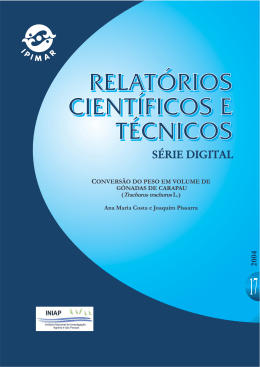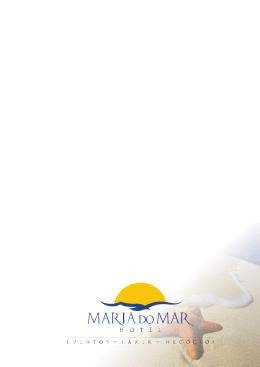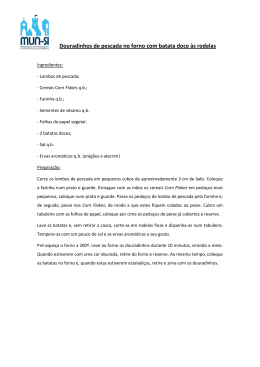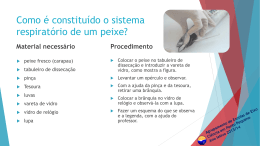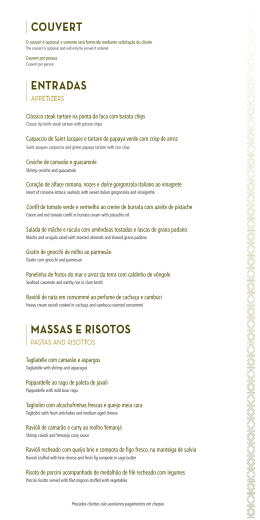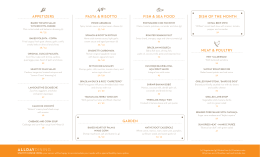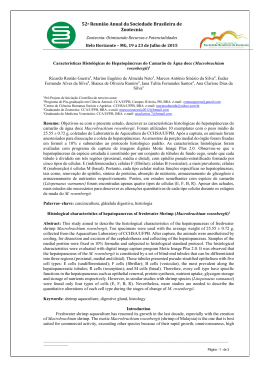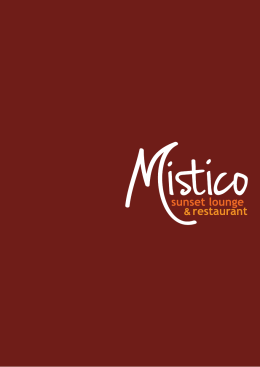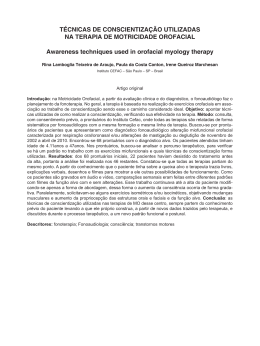PRINCIPAIS RESULTADOS DO CRUZEIRO DE PESCA DEMERSAL “OUTONO 98” NA COSTA CONTINENTAL PORTUGUESA Fátima Cardador; Lisa Borges; Rafael Duarte; Alexandra Silva Departamento de Recursos Marinhos - Instituto de Investigação das Pescas e do Mar Av. De Brasília , 1449-006 Lisboa RESUMO O cruzeiro de pesca demersal designado por “Outono 98” realizou-se durante o período de 8 de Outubro a 11 de Novembro, com N/I “Noruega”, usando uma rede de arrasto de fundo de 20 mm de malhagem e cobrindo a área de Caminha a Vila Real de Santo António. Estimaram-se os índices de abundância (Número/hora) e de biomassa (kg/hora) e a distribuição de: pescada (Merluccius merluccius), carapau (Trachurus trachurus), sarda (Scomber scombrus), cavala (Scomber japonicus), verdinho (Micromesistius poutassou), apara-lápis (Macrorhamphosus spp.), mini-saia (Capros aper), gamba-branca (Parapenaeus longirostris), camarão vermelho (Aristeus antennatus) e lagostim (Nephrops norvegicus). Os índices de abundância e biomassa de pescada e carapau foram inferiores aos do “Outono 97”. Relativamente à profundidade, a maior abundância de pescada verificou-se entre os 100 e os 200 metros e de carapau entre os 20-100 m. O índice de recrutas para a pescada foi ligeiramente superior ao de 1997, verificando-se o contrário para o carapau, que foi muito inferior. O verdinho foi a espécie mais abundante em toda a costa, com índices bastantes superiores a 1997. A maior abundância verificou-se entre 200 e 500 metros de profundidade. O índice de recrutas obtido corresponde a cerca do dobro de 1997. Os índices de sarda foram bastante inferiores aos do “Outono 1997”, verificando-se o contrário para a cavala, a mini-saia e o apara-lápis. A sarda e o apara-lápis distribuem-se preferencialmente entre os 100 e 200 m, a cavala a profundidades inferiores a 100 m e a mini-saia entre os 200-500 m. Em relação aos crustáceos, estes distribuíram-se quase exclusivamente no Algarve, apresentando valores ligeiramente inferiores a 1997 com excepção da gamba, cujos índices de abundância e biomassa foram quase o triplo. O camarão vermelho e o lagostim distribuíram-se entre os 500-750 metros de profundidade e a gamba entre os 100-500 m. Palavras chave : Cruzeiros demersais, índices de abundância, costa continental portuguesa, recursos demersais. ABSTRACT The groundfish survey took place in Autumn 1998, on board of the Portuguese research vessel “Noruega”, using a bottom trawl net, with 20 mm mesh size and sampling an area from Caminha to Vila Real de Santo António. Biomass and abundance indexes and distribution were estimated for hake, horse mackerel, mackerel, Spanish mackerel, blue whiting, snipefish, boarfish, rose shrimp, red shrimp and Norway lobster. Hake and horse mackerel biomass and abundance indexes were lower than in 1997. Regarding depth, the highest hake abundance lied between 100 and 200 meters and for horse mackerel between 20-100 m. Hake recruitment index showed a slight increase in 1998. By opposite, horse mackerel recruitment showed a strong decrease. Blue whiting was the most abundant species, with higher indexes than in 1997. The highest abundance lied between 200-500 meters depth. Recruitment abundance was the double of 1997. Mackerel indexes were strongly lower than in 1997. On the contrary, Spanish mackerel, snipefish and boarfish showed an increase. Mackerel and snipefish were mainly distributed at depths between 100-200 m, mackerel at depths lower than 100 m and the boarfish at 200-500 m. Relatively to crustaceans, they were almost exclusively distributed in the Algarve, with lower values than 1997, with exception of rose shrimp. This species abundance had almost been the triple of the abundance estimated in 1997. Red shrimp and Norway lobster were distributed between 200-500 m and rose shrimp between 100-500 m. Keywords: Groundfish surveys, abundance indices, Portuguese continental waters, demersal resources. ____________________________________________________________________________________________________ REFERÊNCIA BIBLIOGRÁFICA CARDADOR, F.; BORGES, L.; DUARTE, R.; SILVA, A., 1999. Principais resultados do cruzeiro de pesca demersal “Outono 98” na costa continental portuguesa. Relat. Cient. Téc. Inst. Invest. Pescas Mar nº38, 25 pp.
Download
